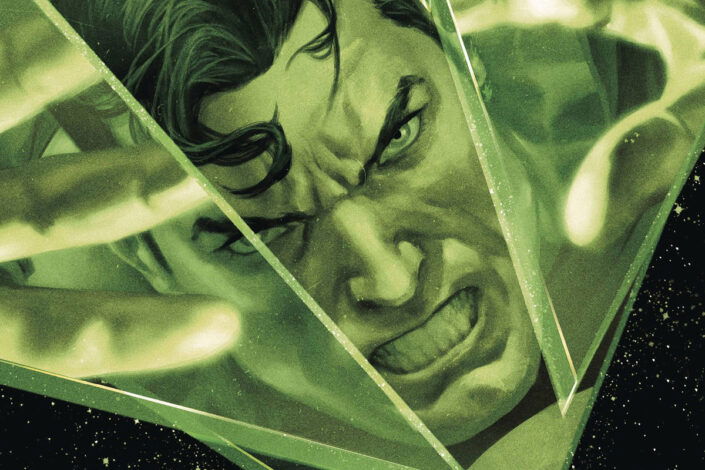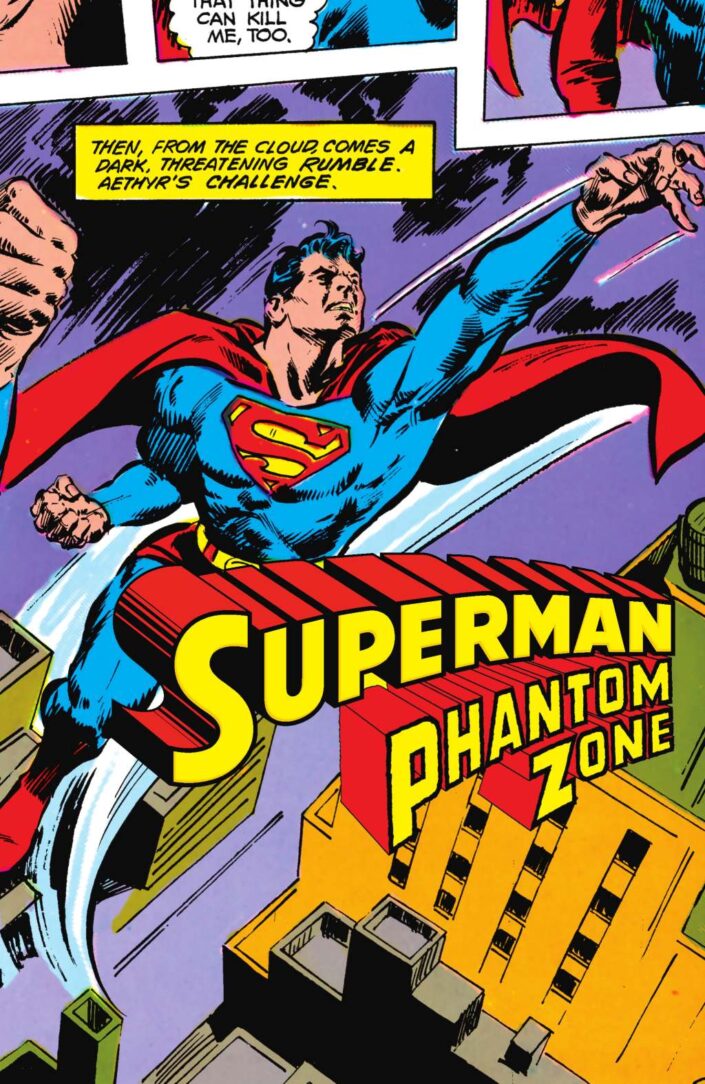
Before Marvel Comics introduced its Negative Zone, DC Comics had presented to its readers a different type of zone, one connected to Superman‘s world, The Phantom Zone. Created by Robert Bernstein and George Papp, this prison parallel dimension first appeared in Adventure Comics #283 in 1961. Back then, Superboy found a stash of Kryptonian weapons that included the Phantom Zone Projector. Since then, the subject has been developed by multiple authors and retconned by others.
The Pre-Crisis Origins of the Phantom Zone
As explained in Superboy #104 by Edmond Hamilton and Papp, the Phantom Zone was created by Kryptonian scientist Jor-El. He introduced it as a humane alternative to replace the “orbit exile system.” Following that, Krypton’s legal system sentenced the criminals to an intangible, timeless exile in a pocket dimension. Within the Phantom Zone, prisoners exist as spectral entities, unable to interact with the physical world but still conscious and aware—essentially, ghosts stuck in eternal imprisonment without the ability to age or die.
With the Phantom Zone Projector saved from destruction, those Kryptonian prisoners survived the explosion of their planet and found their way to Earth. The evil Jax-Ur was the first to escape and torment Superboy, but not the last. The Zone quickly became a recurring plot device in Superman used for decades.
In 1982, following the success of the movie Superman II which used the Phantom Zone to introduce the Kryptonian criminals General Zod, Ursa, and Non, DC Comics’s editor Dick Giordano recruited writer Steve Gerber and artist Gene Colan to produce a miniseries simply titled “Phantom Zone.” In it, we learned that the Zone is in fact manifested by the godlike being Aethyr, the Oversoul. He acts as a cosmic force that can manipulate reality within the Zone.
That part of the story didn’t have an immediate impact as the Phantom Zone was put aside as a consequence of the Crisis on Infinite Earths and the collapse of the original Multiverse. The last Phantom Zone story before the Crisis came once again from Gerber (teaming up this time with Rick Veitch), in DC Comics Presents #97–“Phantom Zone: The Final Chapter” offered a conclusion to the miniseries. Post-crisis, the Zone became less prevalent, but also more largely known as others discovered it and gave it different names.

The Post-Crisis Evolution of the Phantom Zone
In 2011, DC Comics launched the New 52 initiative which came with a lot of rebooted ideas. The Phantom Zone was then reintroduced. In Action Comics (vol. 2) #5 by Grant Morrison and Andy Kubert, we learn that the Phantom Zone was not just a creation of Jor-El. He only developed the Phantom Zone Projector as a way to access and utilize this realm, and it was ultimately turned into a prison. The unethical Kryptonian researcher Xa-Du was the first ever banished into the Phantom Zone and, partly due to prolonged exposure to the Zone, he became even more twisted and dangerous as the Phantom King.
The DC Rebirth era didn’t alter the story connected to the Phantom Zone, but ultimately introduced (in Dark Nights: Metal #3) the idea it was a permeable membrane between the light side of the Multiverse and the Dark Multiverse.
However, in Action Comics 2021 Annual #1 (connected to Future State) written by Phillip Kennedy Johnson with art by Siya Oum and Scott Godlewski, the Phantom Zone being a projection of Aethyr’s mind is clearly restated and expanded upon. It is presented as a place where consciousness could survive without a tangible body, but only when Aethyr slept. When it awakens, the Zone becomes a place of living nightmares.
As the history of DC Comics superheroes is continuously in flux, we are now in the DC All In era. Now, we learn the Phantom Zone Projector was created by Jor-El. His goal was to use it to save the Kryptonians from their impending doom. However, powerful leaders of the Kryptonian Science Council took it away from him and integrated it into their law enforcement system.
At first, the Zone was a realm devoid of substance. Those sent there became immaterial, just floating around. One day, Aethyr discovered the Zone and took pity on the souls. He started to create matter and the prisoners began to become tangible again. Soon, however, he realized that most were monsters, and instead of freeing them, he became cruel towards them, turning the Zone into a nightmarish penitentiary with Xa-Du the Phantom King as warden. This story told in Action Comics #170-181 by Mark Waid and Clayton Henry left the Phantom Zone changed. Maybe we’ll learn more about it in the future.